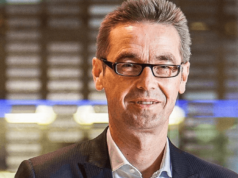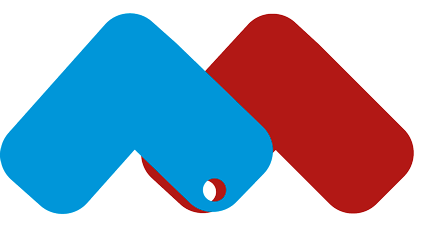Welcome to this interview with neuroscientist Thomas Zoëga Ramsøy by Kim Buch-Madsen. The following discussion casts light on what is neuroscience and why should a leader or manager know how to apply its uses in practice.
What is ‘applied neuroscience’?
Thomas Zoëga Ramsøy: Anyone studying behavioral change knows that Nobel laureate Daniel Kahneman famously revealed how our choices deviate from “rational” choices.
As a psychologist, Kahneman demonstrated the added value of infusing psychological thought and studies into another field, economics. But even at Kahneman’s time, psychology was moving on to include neuroscience. Emerging fields such as neuropsychology and cognitive neuroscience led to an explosion in our understanding of the human mind. So even Kahneman tried out methods such as eye-tracking, to demonstrate that the eye’s pupil dilated during cognitively demanding tasks.
Today, neuroscience is being thrust into behavioral science. One of the first steps is to go beyond the mere mapping of human biases, and to better understand both why we behave as we do, and how it unfolds over time.
Enter applied neuroscience. One definition of applied neuroscience is the use of insights and tools from neuroscience to better understand, measure, and affect human thought and action.
You typically meet this term under other words such as neuroeconomics, neuromarketing, consumer neuroscience, or neuro-leadership. Yet at the core, they share the idea that neuroscience can help us better understand human decision making.
Importantly, one should distinguish between the three ways in which the combination of neuroscience and behavioral science is done. First, there is basic research, where researchers try to understand how the brain drives our thought and action.
Second, we have translational work. Here, we can read about neuroscience studies and be inspired to make new solutions.
Third, we have applied research. Here, the methods and tools of neuroscience are used to test particular questions and issues, such as whether employees are stressed at the workplace if a team is optimally creative, or how a presentation is received among potential clients, employees, or customers.
How is applied neuroscience useful for leaders and managers?
Thomas Zoëga Ramsøy: We should probably first ask what the point is in doing neuroscience in management and leadership at all.
To understand this we should first look at how management and leadership rely heavily on psychology. Modern psychology now includes neuroscience as part of its way of understanding and dealing with the human mind. This has revolutionized the way we understand everything from attention to emotions, cognitive processes, and decision-making in all shades and forms.
A similar integration of neuroscience into management and leadership is currently emerging, both academically and commercially.
Primarily this movement is motivated by getting inspiration from neuroscience to bring new solutions to relevant areas of business. An important contribution is the understanding of not only what irrational choices are made, but also why they happen and how we can avoid them. To this end, Neuroscience is a powerful leverage, especially if we go beyond hyped neuro-claims and fancy images of brains on fire.
My work focuses equally on how we can use neuroscience tools to also measure things related to management & leadership. It provides a host of new solutions, just to mention a few:
- Change Management – understanding, measuring, and improving on obstacles to change
- Innovation – using NeuroPrototyping to test, understand, and improve how people respond to novel products and services.
- Teamwork – improving the creative process and problem-solving in teams
- Recruitment – better profiling of employment candidates’ skills and mindsets
- Communication – boosting corporate communication, both internally and externally (e.g., marketing, PR)
This might come across as a panacea – a cure-all, but the fact of the matter is that neuroscience is just a powerful way to understand the human mind and our choices. When used correctly, it can have a tremendous impact.
You say that neuroscience has revolutionized the way we understand everything from attention to emotions, cognitive processes, and decision-making. Can you explain what that means to leaders and managers, perhaps by giving a few examples?
Thomas Zoëga Ramsøy: Sure – let’s take the example of attention. We all know what ‘attention’ is — but through the past many years, it has become clear that attention is not a single thing.
What we pay attention to can be driven by both automatic and controlled processes. So let’s say that you’re struggling with reading a report, but things that interrupt you, such as emails ticking in, or text messages on your phone, constantly disturb you.
Your ability to focus on the report is controlled attention, but it’s fragile! Phones, emails, and many other devices are designed to trigger your attention. What is the result? You either give up reading the report, or your reading of it becomes superficial at best.
Deep thinking and comprehension of complex matters require time and controlled attention. So if you want to achieve this, the only solution is to “switch off” everything that disturbs you. Forget about being proud that you’re a true multitasker. You’re not! Nobody is! Our brains are not designed to deal with the many triggers of the digital world.
In the same way, we can use neuroscience knowledge to understand emotions vs feelings, what our cognitive bandwidth is, measure stress in the workplace, how to boost creativity in individuals and teams, and many other crucial elements in management and leadership.
Let’s talk about change management, which has always been a major challenge – especially transformational change. Can you give a few examples of how neuroscience is used to improve transformational leadership?
Thomas Zoëga Ramsøy: If there’s one thing that I have learned through many years of consulting for Fortune 500 companies on innovation, it’s that nobody knows exactly what they’re doing.
We all hear about “moonshots” and “failing fast” and so on, but in truth, everybody is scrambling to understand what’s actually going on.
Worst of all, we now know that uncertainty and ambiguity – the very essence of what is innovation in this time and age – means triggering the fear network of the brain. This may cause risk aversion, stifled thinking, and lost opportunities.
To abate uncertainty, we came up with a crucial solution for reducing uncertainty and providing information that guides decision-makers. Emerging from our work in Silicon Valley and many other innovation scenes, a NeuroPrototyping solution was developed for testing concepts and prototypes.
Can you explain what is NeuroPrototyping?
NeuroPrototyping works by basically putting on equipment like an eye-tracker and an EEG brain scanner. These tools allow us to record unconscious responses as they unfold over time.
This gives us measures such as what people are paying attention to (and missing), how they are responding emotionally, whether they understand what they are processing or are being overloaded, and whether they will remember the information. These are all very basic responses, yet absolutely crucial for ensuring that people understand information, learn a new skill, are active during a meeting, or can work optimally in a group.
NeuroPrototyping is used for testing how relevant people (customers, executives, board members) respond to novel concepts and prototypes. Testing types of responses provides a whole new layer of information that companies can use to guide their decisions. So instead of going by gut responses and instincts, we can say whether people understand your idea, if they are confused by your prototype, if the name throws them off, what the learning curve looks like, and whether responses differ due to age, gender, affluence or other aspects.
I can give you four examples:
- IKEA wanted to launch a new strategic initiative for providing renewable energy solutions to customers, and we tested how customers in Holland and Poland responded to these new initiatives
- We helped Lowe’s and Google to optimize how augmented reality could be used to help their customers visualize products in their own home
- When Facebook acquired Oculus, we tested how people would respond to social interaction in VR
- More subtly, we recently helped Spotify identify musical rhythms that would be optimally suited to their launch in India
At the core of these solutions is that we help on at least three counts. First, we use neuroscience tools to get data on what people see and how they respond to concepts and prototypes. We then compare this to our database from years of testing innovative solutions, to give context to these responses.
Second, we use our knowledge of neuroscience and psychology to provide advice on how to improve solutions.
Finally, we also look at what the scores predict. For example, a couple of years ago we showed that we could predict the success of Kickstarter campaigns by testing how a novel sample responded.
I remember our first lunch where you said something like “basically what I do concerns developing and applying neuroscientific measuring sticks”. Can you explain how this is done for transformational change management uses?
Thomas Zoëga Ramsøy: I’m an empiricist. If you listen in on groups that design ad campaigns, make strategic acquisitions, or debate corporate innovations, you will discover that there’s a shortage of information.
Decision-makers often end up with a roundtable discussion where they all have their own favorites. Sometimes you hear that they have data from a survey or a focus group, but this only shows a selective picture of how people respond to novel products and services. So what is needed is new measurement sticks. Therefore, we have come up with a set of questions that neuroscience is an expert at answering.
These are questions such as: are people seeing what you want them to? Are they emotionally engaged by what they experience? Are they understanding what you show them or are they overloaded or bored?
These questions may even seem a bit basic, but think about it this way: if you don’t pass these tests then how can you hope to positively impact your users?
For management and leadership, we have used these tools for a range of different tasks. As we have mentioned earlier, we have helped companies make more informed decisions on innovation.
Some recent steps we have taken are also tools more involved in team building and work — such as recruitment tools/supplements (e.g., a creativity profiler), and a brand tracker for employers. We are just about to complete a project where we can reliably measure and map stress at the workplace over time and space.
Finally, we are now using the latest knowledge from neuroscience and psychology to build a virtual reality platform for team creativity and problem-solving.
You can say that neuroscience helps company transformation and change management by reducing uncertainty and by changing the process from “moonshots” to smaller, more manageable “roof jumps”. Mind you, this does not only apply to large corporate innovations such as inventing a whole new product. This also applies to internal change management.
What is often the obstacle to change?
The brain is not particularly fond of uncertainty and novelty. We have an innate negative response and skepticism to what’s new.
We also have a negative attitude towards things that require effort. Sure, we can come up with reasonable arguments against change. But at the core, change management is hard because change is all about novelty and hard work.
Neuroscience can probe and quantify these types of responses, understand them better, and through this identify the ways that have the least resistance, and improve on them.
Harvard published “Leading Transformation – how to take charge of your company’s future”, written by you, Nathan Furr, and Kyle Nel. What’s the new stuff in your book compared to the huge number of other books about transformation and change management?
Thomas Zoëga Ramsøy: There are a few things that made us decide to write this book. Basically, you need to feel that you’re putting something new and useful to the table. As you say, there are indeed many books on innovation, transformation, and related concepts. But what we’ve seen is that these solutions often are context-dependent, genius-based, and even pretty conservative and “controlled.”
We wanted to write the book in part to share the experiences we had gained by combining psychology, neuroscience, and storytelling in driving disruptive, successful change in legacy corporations. Along the way, we made a few realizations.
First, we need to suspend disbelief and standard “managerial thinking” to allow disruptive thinking.
Second, we had to identify bottlenecks and obstacles to change.
Finally, we realized that to do proper testing of concepts and prototypes we needed new tools. This led us to use science fiction prototyping and comic books to show possible futures, to do a deep behavioral assessment of the innovation teams, and to use applied neuroscience as the benchmark for testing ideas and prototypes.
The success of this has not only been limited to a few companies, but has shown substantial value to companies like Google, Facebook, IKEA, and many others.
Among my many takeaways from your book is the evidence about what stories or narratives do to our brains and how to use them in leading transformation. Will you explain this?
Thomas Zoëga Ramsøy: Narratives are something we do continuously, as part of just being awake. Stories — whether told to ourselves or others or – consumed ourselves – are vehicles that we use to make sense, to put things in a literal perspective. But they are also often obstacles to change.
Just as you can see a depressed person having a negative, ruminating narrative that is hard to break, whole organizations can hold stories about who they are and what they do that often become who they are not, and what they cannot do. By challenging these narratives and offering new ones, change can happen. This is not trivial.
What we found was that at least two components need to be in place for a narrative change to happen. First, we need to provide a completely novel narrative – here, science fiction turned out to be powerful in bringing us into a different mindset. Next to this, unfamiliar presentation methods such as comic books or even rap battles (!) can bring a totally different response in recipients. You can imagine how C-suite people respond when they get handed comic books instead of the well-known PowerPoint presentations…but it works! First, they laugh, then they skim it, then they start discussing.
In your book, you pinpoint the “small-then-large” approach and the importance of building an artifact trail. Why is this important when leading transformation and how does it work in terms of applied neuroscience?
Thomas Zoëga Ramsøy: Companies tend to focus on “moonshots” and other large undertakings when making transformative changes in our companies. Yet so often it is the small issues that lead to the win or lose situations with customers. If people don’t see the new elements (or even the product) you want them to see, you don’t even make it through the doorway. If they are confused by your product or offer, they will drop out. If they are not the slightest emotionally engaged, they will not adopt it.
To track this in the best possible way, we found that neuroscience tools were superior. When done right, you can track and monitor how people’s responses unfold over time with millisecond accuracy. This leads to a whole new level of diagnosis that you can use to detect the micro-obstacles to change that which you would otherwise never have caught. Testing in these conditions allows you to move into gradually larger levels of implementation.
The concept of “negative capability” is new to me, yet I recognize the importance of this capability from my own experience and readings. Why is this important and how does it work in terms of applied neuroscience?
Thomas Zoëga Ramsøy: When we look at what drives innovation, we tend to focus very much on positive attributes such as people who have many and diverging ideas, who are “doers” that make things happen, who are great team players, or those that are driven by the great ideas. There are, however, more nuanced traits, usually called “grit” or “perseverance,” — and some people have a particular ability to work even when situations are unclear, ambiguous, and with less clearly defined goals.
The term was coined “negative capability” by the poet John Keats to describe writers such as Shakespeare. This capability is crucial to have in corporate innovation teams and positions. Some people hate uncertainty, they prefer predictability and foresight. Others prefer action and being on the move. But a few people shine the most when situations are unpredictable, novel, and ambiguous.
If there’s one place that this is needed, it’s in innovation — where novel ideas need to be married by pragmatic feasibility and corporate expectations, even when competitors and black horses are out there. We are currently working on ways to reliably identify and profile this as a personality trait since it would be a great measure as part of a recruitment process.
It seems to me that applied neuroscience is moving quite fast these years when it comes to adoption by leaders in business and society. What do you think about this and what are your expectations for the next 5 or 10 years?
Thomas Zoëga Ramsøy: That’s always a tough question. Applied neuroscience is moving forward, but there’s also a lot of noise around it. Too many people speak of the brain using antiquated theories and misrepresented findings. Too often I still hear about the left and right brain differences, or that we only use 10% of our brain capacity. These are all debunked misunderstandings.
Instead, what we see in the core of applied neuroscience are a few notable steps. First, as technology is becoming smaller, faster, better, and cheaper, neuroscience tools are becoming more available, affordable, and scalable. For example, today, we are running studies in Japan, the US, Latin America, India, the Middle East, and Europe all at the same time, since our tools are so scalable and reliable that they can be carried in a handbag.
Second, scientists are joining forces to provide better validation of the different methods used. For example, so far automatic facial coding seems to not be considered valid or reliable and needs to be interpreted with care.
Finally, we get better at using the data from neuroscience measures to predict anything from individual behavior to market responses. Recent studies have shown that testing in a smaller sample of people can predict anything from music hits and movie box office sales to Twitter responses and stock market behavior. This is because neuroscience responses in smaller samples still can represent responses that are commonly human.
To use an analogy — we all jump in the chair when we watch a horror movie, some more and some less. But we all respond. This coherent group response is something neuroscience can tap into like no other method. With that, we see a lot of potential, and a lot of challenges, including ethical ones.
On a final note – what is the history of your neuroscience career?
Thomas Zoëga Ramsøy:: After dabbling a bit in business economics and then philosophy, I was trained as a neuropsychologist and worked a few years like this. I then did a Ph.D. in neurobiology with a focus on the human brain during decision making, consciousness, and emotions. My main method was fMRI scanning but I was also involved in projects using other imaging methods such as EEG and PET scanning.
After my Ph.D., I started a new research collaboration between Copenhagen Business School (CBS) and the Copenhagen University Hospital, studying the brain bases of decision making. My neuroscience career had begun as this evolved into the Center for Decision Neuroscience at CBS, where I engaged in teaching neuroscience-related courses such as neuromarketing, behavioral economics, neuroeconomics, and their MBA.
By late 2012 it was increasingly puzzling to me why companies were offering neuroscience solutions commercially with little or no scientific backing. Working as a scientific advisor and a board member was one way of contradicting this trend. Meanwhile, I was contacted by Lowe’s companies in the US; a then Fortune 50 company. We started a collaboration about how to use neuroscience solutions in their business, ranging from consumer responses to business innovation. I then founded Neurons Inc, and after I left my position at CBS in mid-2015 the company grew exponentially.
I’m still actively involved in scientific publications and on the editorial board of multiple top journals in both psychology and neuroscience. I guess one could say that I’ve always kept my scientific rigor high, as a counterpart to unscientific claims and methods, which plagued the industry.
Today I have the pleasure of working with some of the largest companies on this planet helping them use neuroscience tools and insights to further their own business. Today my company Neurons is still at the core of what I do but we also work on new initiatives and spin-offs such as virtual reality to boost creativity and an AI solution for predicting people’s visual attention.
____
ManageMagazine would like to thank Interviewer Kim Buch-Madsen and neuroscientist Thomas Ramsoy for providing great insights into the world of neuroscience and its uses for leadership and management.
You can find out more about neuroscience and Thomas Ramsoy at his website Neurons Inc.
200220









